Healthy You

Health trends you’ll fall for


Hygge the key to happiness?




Charcuterie boards 101

6 exercise trends to explore
Pumpkins pack a punch!


Health trends you’ll fall for


Hygge the key to happiness?




Charcuterie boards 101

6 exercise trends to explore
Pumpkins pack a punch!
“Healthy You” magazine is published as an educational resource for UMR members and provides information about tools and resources available from UMR as a part of our member online services.
Available features and benefits are dependent on the products and features included in the plan design. Not all members will have access to all features shown.
Copyright ©2021 United HealthCare Services, Inc. Reproduction in whole or part is not permitted without permission in writing from UMR. All information and links were accurate and functional at the time of publication. However, because this electronic publication contains links to third-party sites, information can change and become unavailable.
While using this electronic publication, you may click on a link to other websites. We provide links to other websites that may contain information that may be useful or interesting to you. We do not endorse, and are not responsible for, the content and accuracy of linked websites operated by third parties or for any of your dealings with such third parties. You are solely responsible for your dealings with such third parties and we encourage you to read the terms of use and privacy policies on such third-party websites.

AUTUMN TRENDS ............................... pg. 6 YOU’LL FALL FOR
Give your health a boost by tapping into what’s trending this season.
COULD THE SECRET TO ................... pg. 8 HAPPINESS BE HYGGE?
How to get cozy with this Scandinavian philosophy.
FALL’S SUPERFOOD ....................... pg. 11
Make pumpkin the star ingredient in your kitchen this season with these recipes and tips.
ENDOMETRIOSIS ............................ pg. 14
One in 10 women suffers from this painful condition. Learn more about symptoms and treatments.
COPING WITH THE ......................... pg. 18 EMOTIONS OF CAREGIVING
Get tips for managing the feelings that come with caregiving – and for supporting the caregivers you know.
CHARCUTERIE BOARDS ............... pg. 21
They’re all the rage! Find creative food ideas for your next gathering.
BRUSH UP ON THE LATEST ......... pg. 26 EXERCISE TRENDS

Shake up your workout with one of these popular fitness regimens.
QUIT FOR GOOD .............................. pg. 30
Want to stop smoking? Nicotine replacement therapy could be the key.
A single click lets you track all your claims
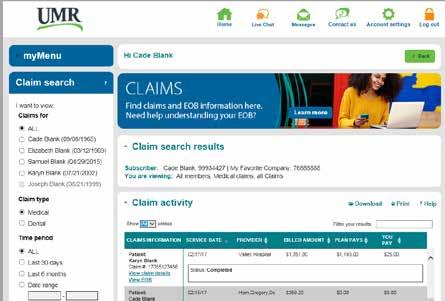
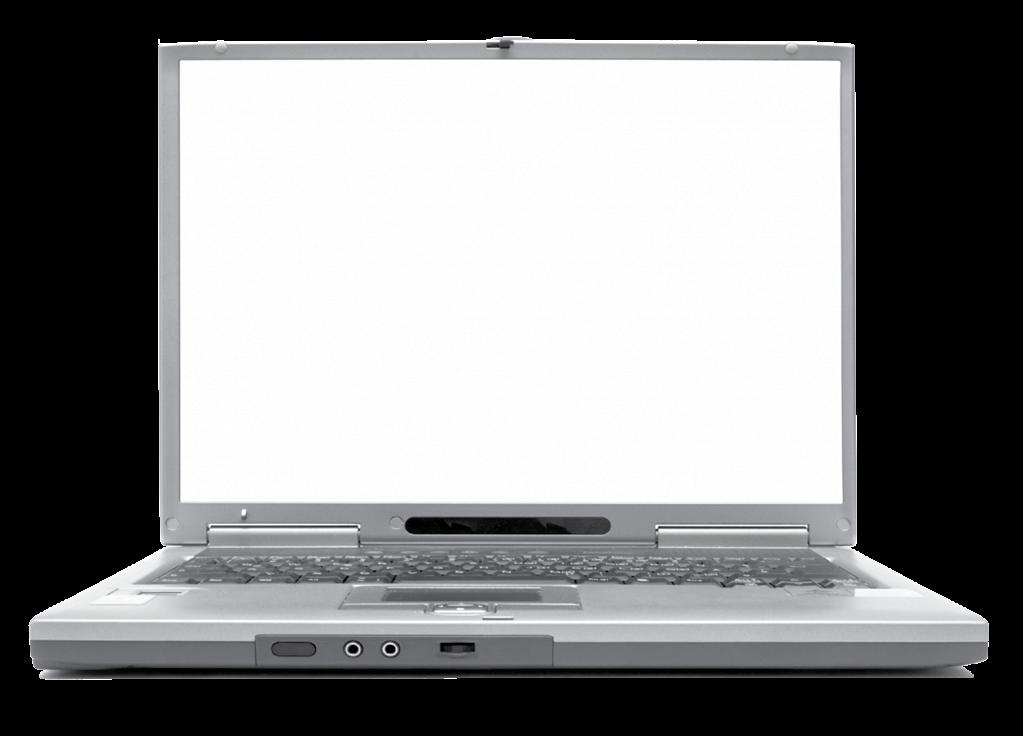
Check in at your convenience to see if a claim has been processed and what you might owe. To get more details on a specific claim, click View claim details or View EOB. And, take advantage of the Action needed prompt to know when you need to follow up on a specific claim.
Make sure you check out this FREE resource. Log into your member account on umr.com
As
View upcoming tasks right from the homepage.
Now there’s no need to carry it with you, it’s at your fingertips.
Find
See
iPhone: Touch and hold the open book icon to add umr.com
Android: Tap on the menu. Then select “Add Bookmark.”
Review a claim for yourself or an authorized dependent.
View medical/dental benefits and see who's covered under your plan.
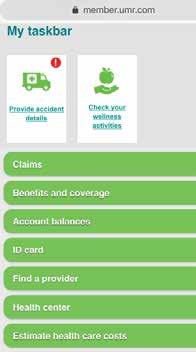
Look up balances for your special accounts, including HRAs and FSAs.
The funny thing about fall is that it seems to start in summer and end in winter – and come into its own sometime in between. Depending on where you live, it may be 80 degrees when autumn officially begins on September 22, yet 20 degrees when it comes to a close on December 21. Back-to-school and Labor Day feel like fall milestones despite the fact that they happen during summer. Hanukkah, Christmas and New Year have strong winter vibes even though they occur during fall or a few days after. And Halloween and Thanksgiving sit squarely in the middle. That leaves a lot of ground to cover when planning a fall magazine! With this in mind, we focused on some healthy autumnrelated trends that span this multifaceted season.

If you haven’t joined in the charcuterie craze, now is the perfect time. Our article on page 21 will help you build a tasty board for any occasion (think Halloween party or post-trick-or-treating snacks, Thanksgiving appetizers or New Year’s Eve tapas).
Heard of Hygge?
It could be the secret to happiness as the weather turns cooler and the days grow shorter. Learn more about this Scandinavian philosophy on page 8.
While the number of flu cases were down last year thanks to social distancing, health experts are expecting it to make a comeback now that more schools, offices and public places have reopened. So don’t forget your flu shot along with your COVID-19 vaccine (page 17).
Fall is a popular time to re-commit to an exercise routine. Brush up on the hottest exercise crazes, from Barre to HIIT to pilates –then pick one to try (page 26).
Pumpkin spice: Do you love it or hate it? Either way, we have lots of creative ideas for making the most of pumpkins, with or without the spice. Find out about the health benefits of this fall fruit and check out the recipes and ingredient substitutions on page 11.

A lesson from Denmark that could make a difference in your daily outlook on life ...


According to the 2016 World Happiness Report, Denmark wins the prize as the world’s happiest country. The report says that despite the cold, dark climate and the common feelings of boredom and isolation, the people in Denmark have come up with a practice to find happiness. They call it hygge.
Hygge is a special feeling or moment. It can be alone or with friends, at home or out, ordinary or extraordinary but is always cozy, charming and special.

(pronounced HUE-GUH)
Candles are essential! About 85% of Danes say that a home filled with glowing candles, lit in almost every room, is an important ingredient in creating the coziness associated with hygge. Add to that a warm, comfortable blanket and the perfect chair or couch, and you’ve set the mood.

Comfort is key here. Pull out your old sweatpants, pajamas, leggings, sweaters or wool socks. Just make sure to pick something that you love lounging around in, and don’t worry if it’s full of holes or half threadbare. Just think of something that gives you a hug when you put it on.
Creating hygge might mean a departure from the demands of healthy living when it comes to food. This is a time to indulge in a warm, fragrant, satisfying meal or snack that you truly love. You can still be smart about your diet and food choices if you think it through. Think of baked goods fresh from the oven, simmering tea, coffee or hot chocolate, or a pot of fresh stew or chili.
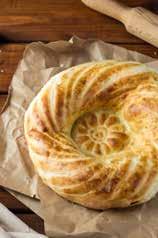
Curling up to a good, relaxing movie or TV show is very hygge, especially of you’re sharing a blanket and bowl of popcorn. Some suggest creating a quiet, calming “nook” in your home as a place to snuggle up with a book and your favorite warm drink.
Other alternatives may include enjoying a board game, relaxing with your pet, or even taking a stroll around the neighborhood.
As you can see, hygge has a lot to do with personal choices. So try the practice of hygge the next time you want to decompress from a stressful day. You'll be glad you did.
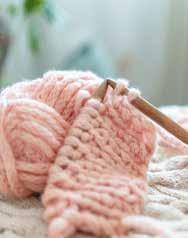

Hygge doesn’t cost anything ... it’s something you create!
UMR is working to ensure we are available to support you during this time. Here is general information about how you can best cope with COVID-19. For more specific information about your plan, log into your member portal or call the phone number on your member ID card.
The COVID-19 situation continues to quickly evolve. Go to the CDC for the latest information on COVID-19, including how to protect yourself, what to do if you are sick and if you should travel.

If you think you might have been exposed to COVID-19, call your health care provider right away. UMR members can find a network health care provider by selecting Find a provider on umr.com or by calling us using the phone number on your member ID card.
• Access your health plan account: Sign in to umr.com to find network health care providers, benefits coverage and more.
The Centers for Disease Control and Prevention (CDC) is the best place to go for COVID-19 questions and information. UMR is here to support you and respond to your health benefits needs and questions.
• Call with COVID-19 benefits questions: If you have health benefits questions or need help finding a health care provider, call the phone number on your UMR member ID card.







• Get emotional support: Call our emotional support line any time at 866-342-6892. This 24/7 Optum Help Line is staffed by professionally trained mental health experts, free of charge and open to anyone.





When the cool autumn air blows in and the fall colors start to make their appearance, we often hear, “It’s pumpkin spice season!” Whether you love or hate that pumpkin trend, rest assured there are dozens of ways to incorporate this fall superfood into your diet without an expensive trip through the drive-thru.

One cup of pumpkin seeds contains:

• 49 calories
• 245% daily value
vitamin A
• 2 grams of fiber
• 2 grams of protein
• Beta carotene
• High levels of
- vitamin C
- potassium
- copper
- manganese
- vitamin B2
- vitamin E
- iron
Pumpkins are often thought of as a vegetable, but they’re actually an edible fruit and members of the Cucurbitaceae family, which is comprised of squash, melons and cucumbers. In fact, all varieties of squash are edible fruit, and there are a multitude of ways to eat and use them.
Not only are pumpkins edible, but they offer amazing health benefits:

- Pumpkins contain antioxidants that can help curb chronic illness and prevent cell damage.
- This nutrient-dense food, which is low in calories but high in fiber, keeps you full longer without the extra calorie intake, meaning that pumpkins can be a great food to eat if you’re trying to lose a few pounds.
- Pumpkins contain some of the best nutrients for skin health, such as vitamin A, E and C. In addition, vitamins A and C are associated with immune-boosting benefits we could all use more of as flu season kicks up and we spend more time indoors.
Turn to page 34 for some delicious autumn-inspired pumpkin recipes.
Pumpkins aren’t just for baking into pie or using for holiday decoration and pumpkin carving. There are many other healthy uses for this fall fruit:
Make your own pumpkin puree to use in pie, smoothies or as a replacement in baked goods such as cakes, pies, brownies and pancakes:
How to make puree: Cut a small 4-6 lb. baking pumpkin in half, scoop out the insides, bake cut side down at 400 degrees for 45-60 minutes, scoop flesh out into food processor to process until smooth. (Try experimenting with other varieties of pumpkin and squash.)
Replace the oil or butter in a recipe with pumpkin puree. Oil to pumpkin is 1:1, butter is ¾ pumpkin to 1 cup butter
You can also replace the eggs in baked goods with ¼ cup pumpkin puree per egg.
Roast, soften or puree pumpkin for babies 6-plus months.
Add pureed pumpkin to a traditional chickpea hummus for a pumpkin flair.
Dice pumpkin and add it to soups, stews and chili.
Roast your jack-o-lantern pumpkin seeds (picking out those seeds is a good project for little hands).
Buy pre-packaged pepitas (a specific variety of pumpkin seed) and sprinkle on a salad or mix into loaves of bread or cookies.




Pumpkin isn’t just for eating –it’s a topical superfood, too! Try this pumpkin facial to fight inflammation and get an extra dose of vitamin A:
• One tbsp pumpkin puree
• One tsp honey
• One tsp apple cider vinegar Mix the ingredients above and apply to face, kick back and relax for 15 minutes. Then rinse or wipe off with a wet cloth.
Check out our Summer 2021 issue, where we focused on ways to fight the sun from the inside out (p. 14).
Grow your own pumpkin microgreens or save some seeds to start your own pumpkin patch in the spring!
What if ... every time you had your period, you not only suffered from menstrual cramps, but also can’t-get-out-of-bed off-the-charts severe pain? You’re not alone.
Endometriosis is a condition where the cells in the lining of the uterus (called endometrium), are found elsewhere in the body. These cells may relocate to the ovaries, fallopian tubes, bladder or other parts of the pelvic region.
Each month, the cells build up then break down and bleed. But, unlike the cells in the uterus that leave the body through menstruation, the blood from the cells outside of the uterus has no way of escaping. The result is inflammation and the formation of scar tissue (which can cause unbearable pain).
Endometriosis is complex and difficult to diagnose, so it’s important to know the early signs of this condition as well as treatments so you can, hopefully, get relief.
Severe menstrual pain is NOT normal.
Symptoms
• Persistent daily pelvic pain
• Severe menstrual pain
• Painful intercourse
• Infertility
• Gastrointestinal pain
• Lower back pain
• Excessive bleeding
• Weakness
• Nausea
• Pain relievers don’t work
• Symptoms are interfering with your daily activities
NOTE: 10% have no symptoms at all!
Often, women will be diagnosed with endometriosis when they are having trouble getting pregnant; of those who experience infertility, roughly 30% have endometriosis.
That’s similar to the number of people suffering from diabetes or asthma.
The only way to truly diagnose endometriosis is with laparoscopic surgery, but doctors can usually make an educated guess without it. A diagnosis is often made based on symptoms alone; women with particularly painful periods may already be on their doctor’s radar. If you have concerns about your menstruation or painful periods, schedule a time to talk with your doctor or ob-gyn as soon as possible. Your doctor can begin assessing the situation and may be able to provide relief and treatment to make things more manageable.
There is no cure, only treatments to manage the condition, like anti-inflammatory drugs, surgery to remove lesions, hormonal drugs and surgical options, including hysterectomy. And there are at-home remedies for a more holistic approach.
SURGICAL: On the surgical front, the past 15 years have brought important advances. For instance, being able to operate laparoscopically rather than through open surgery speeds recovery time and helps surgeons locate errant cells. Yet there hasn’t been a new Food and Drug Administration–approved therapy for endometriosis in more than two decades, surgery is rarely a cure, and treatments can cause life-altering side effects such as early menopause or suppressed ovulation.
AT-HOME REMEDIES: There are many ways to manage the chronic pelvic pain of endometriosis, and both non-pharmacologic and self-care routines can be helpful. You can explore yoga, aerobic exercise, cognitive behavioral therapy, acupuncture and acupressure with your care team. Many women who have endometriosis symptoms also suffer from other chronic conditions, such as irritable bowel syndrome, interstitial cystitis, myofascial pain syndrome and more, necessitating a “holistic approach” to treatment.
Flu shots are available at you provider’s office, pharmacies and some grocery stores.
The United States saw historically low levels of influenza during the 2020-21 flu season. Experts say the small number of cases, hospitalizations and deaths related to the flu may be a result of the steps we took to protect ourselves during the pandemic and slow the spread of the COVID-19 virus.
By wearing masks, staying home, avoiding travel, washing our hands regularly and physically distancing, we were also less likely to come into close contact with someone who was infectious with the flu virus.

We were fortunate to have a quiet flu season last year, but influenza viruses remain active around the world, and we can expect more cases here again as we enter fall and winter.
The best way to avoid catching the flu is still to get vaccinated each year. Most people should get their flu shot in September or October, according to the CDC. That’s before the flu starts spreading in most places but also late enough to last through the worst of the flu season.
Children 6 months to 8 years old who have not had a flu shot before need two doses given at least four weeks apart. They should get an early start so they can get the second dose by the end of October.
OCTOBER
Domestic Violence Awareness
Health Literacy
Breast Cancer Awareness
Sudden Infant Death Syndrome
N OVEMBER
American Diabetes Month COPD Awareness
Great American Smokeout
DECEMBER Influenza Vaccination Week (12/6-12/12)
Handwashing Awareness Week (12/6-12/12)
Protect yourself, better than this ... from the flu!


Acting as the caregiver can be an emotional challenge. While some aspects of caregiving can offer a sense of fulfillment and usefulness, feelings of guilt, anger and sadness are common. And knowing that what you’re feeling is normal only goes so far.
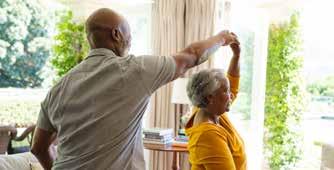


You might feel like you could be doing more or shouldn’t struggle. Try to accept that you’re doing as much as you can do right now. And remember that it’s OK to ask for help.
You may be grieving for the person – or the life you had planned with them. Allow yourself to do this. You may benefit from talking with a grief counselor.
Often described as the “negative cost of caring,” this emotional and physical exhaustion leads to a diminished ability to empathize or feel compassion for others. Finding appropriate support and prioritizing self-care is the best way to prevent and alleviate this type of burnout.
Caregiving can be isolating. Consider joining a support group, where you can talk with people who understand what you’re going through.
Visit
Learning as much as you can about how to care for your loved one may help ease your worries. Read up on your family member’s illness. Talk with their doctor.
Supporting caregivers


Reach out often
Offer to help

Listen without judgement
Provide food
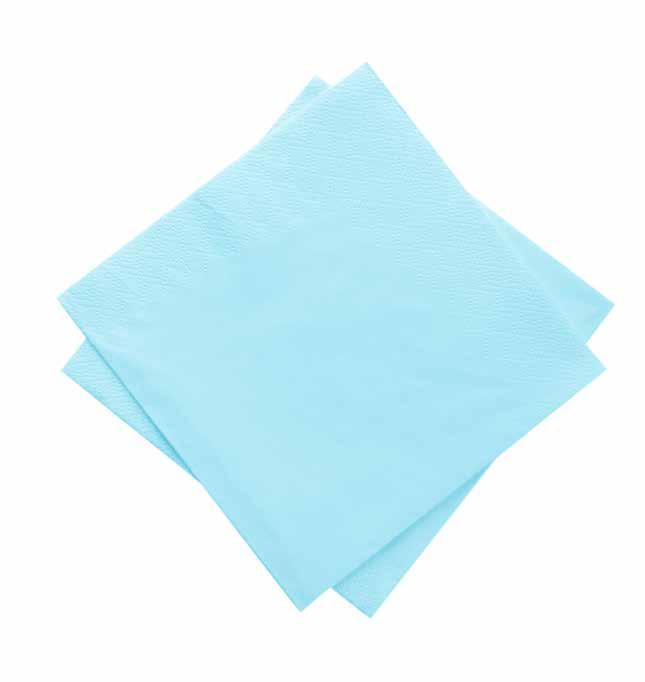

Grapes and apple slices are a sweet, healthy addition. (Soak apple slices in lemon juice to keep them from turning brown.)
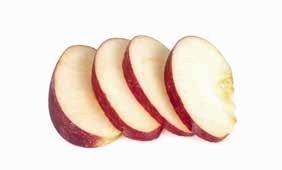

as rosemary, to add fragrance and layered texture to the board.

Add whole-grain goldfish crackers, along with meats and cheeses cut into fun shapes, to make your board

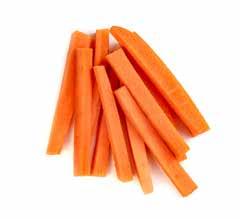

Dried fruits add sweet and salty notes to the board. Nuts provide protein and satiety.


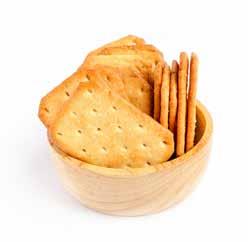
Add whole-wheat crackers or water crackers for more flavor.
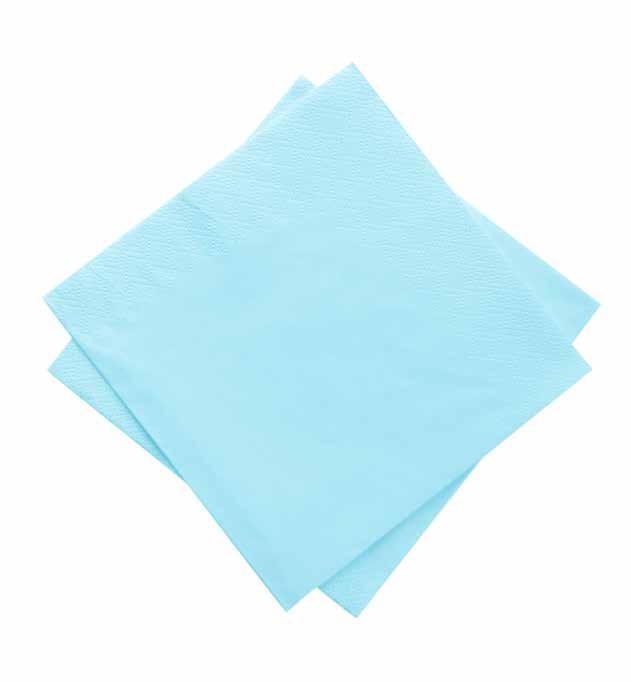
Whether you're hosting a party or attending a potluck, consider getting creative with a charcuterie board.They're perfect for any holiday, from Halloween to NewYear's Eve, and they can serve as an entire meal for a small gathering or an appetizer for a larger affair. Here are some ideas for building a board that will wow your family and friends.
Hot pepper jelly and cream cheese is a hit with anyone who likes to spice it up!
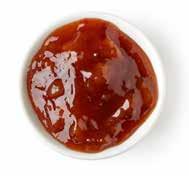
For extra crunch without the extra calories, incorporate vegetables in lieu of or in addtion to crackers.

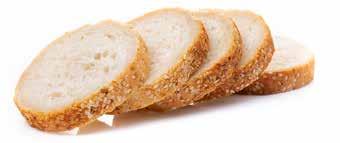
Sturdy bread slices or pita chips make it easy to build tasty bites with cheese and meat or dips.
Try incorporating a spreadable cheese, such as brie, which pairs well with fruits and fruit compotes, such as lemon curd.
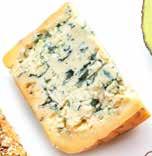

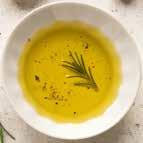
For visual interest, include three varieties of cheese of varying color and taste.


For a nut-free option, try sunflower seeds or pepitas and pumpkin seeds.

You can find a variety of flavored hummus and infused olive oils at the local grocery store.
See pumpkin hummus recipe on page 35.
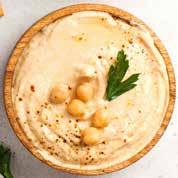
Olives are packed with healthy fats and come in a variety of options, including garlic and blue cheese-stuffed!

Salami, pepperoni and cold cuts pack a protein punch and are a crowd-pleaser.

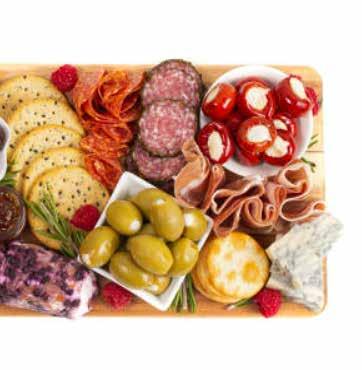
someone is sick or in a crisis situation.
Where you go for medical services can make a big difference in how much you pay and how long you wait to see a health care provider. Explore the following information to help you decide the appropriate setting for your care.
What you need to do:
Find your member ID card
The COVID-19 situation continues to quickly evolve. Go to the CDC for the latest information on COVID-19, including how to protect yourself and what to do if you are sick.
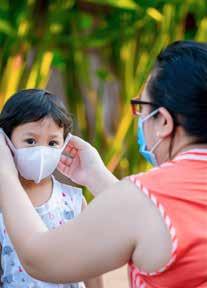
3
Find a provider
On your member ID card, you’ll find:
• Your PPO network
• Contact number
• Pharmacy contact, if applicable You can also visit our website at umr.com.
Determine the severity of the symptoms and choose the provider that works for you


If you are severely ill and/or it’s an emergency, call 911.

Retail clinics, sometimes called convenient care clinics, are located in retail stores, supermarkets and pharmacies. You can find over-the-counter medications, and you can talk to your pharmacist for help.
TIMES TO GO:
• Vaccinations or screenings
• Sinus infections
• Minor sprains, burns or rashes
• Headaches or sore throats
Expect to wait 15 minutes or less
Average cost $50-$100 (per service for non-employer sponsored facilities)
Urgent care centers, sometimes called walk-in clinics, are often open in the evenings and on weekends.
TIMES TO GO:
• Sprains and strains
• Sore throats
• Minor broken bones or cuts
• Minor sprains or burns
• Minor infections or rashes
• Earaches
Expect to wait 20-30 minutes
Average cost $150-$200 (for non-employer sponsored facilities)
Seeing your doctor is important. Your doctor knows your medical history and any ongoing health conditions.
TIMES TO GO:
• Preventive services and vaccinations
• Medical problems or symptoms that are not an immediate, serious threat to your health or life
Expect to wait 1 day to 1 week or more for an appointment
Average cost $100-$150
Visit the ER only if you are badly hurt. If you are not seriously ill or hurt, you could wait hours, and your health plan may not cover non-emergency ER visits.
TIMES TO GO:
• Sudden weakness, trouble talking or blurred vision
• Large open wounds
• Difficulty breathing
• Severe head injury
• Heavy bleeding
• Spinal injuries
• Chest pain
• Major burns
• Major broken bones
Expect to wait 3-12 hours (for non-critical cases)
Average cost $1,200-$1,500
Do you remember Sweatin’ to the Oldies, the Thighmaster or Jazzercise?
Fitness trends come and go, and those three are some of the classics that are actually still around today! Here is a quick overview of the latest exsercise trends, in case you’ve heard of them but aren’t sure exactly what they are. If one strikes your fancy, do a little bit of research to see if you think it’s right for you. And as always, check with your doctor before starting any new exercise program.
Barreisusuallyconductedinclassesatgymsorspecialty studios.It’sbasedonexerciseusingaballetbarreand incorporatesmovementsderivedfromballet.Butdon’tbe fooledbytheconcept.Thisexercisefocusesoncardio,strengthtraining andstretching–notperfectingyourballetskills.Itincorporateslowimpact,high-intensityexercisesdesignedtostrengthenyourbodyinways fewotherworkoutscan.ManyBarreclassesalsouseequipmentsuchas resistancebands,sliders,ankleweights,freeweightsandexerciseballs. Typically,classesbreakworkoutsintosectionsthatfocusonmajormuscle groupsincludingarms,legs,glutesandcore.Barreclassesmayalsoboost endurance,improvebalance,increaserangeofmotionandpromote betterposture.
• Power
•Flexibility
•Strength
•Stamina
•Cardio/respiratory endurance
10CrossFitbasesitsdesignon areasofphysicalfitness:
•Agility
•Speed
•Balance
•Coordination
•Accuracy
andCrossFitisastrength,conditioning consistsoverallfitnessprogramthat calisthenicsmainlyofaerobicexercise, andweightlifting. CrossFitispracticedbythousandsofpeopletheadayinhour-longclassesatgymsacross warmup,country.Atypicalclassconsistsofa askilldevelopmentsegment,a orworkoutofthedayandaperiodofindividual groupstretching. disciplinesItalsofocusesonequipmentfrommultiple including(butnotlimitedto)ropes,barbells,ropeclimbs,pull-upbars,jump medicineballs,resistancebandsandrowingmachines.
Theworkout-at-hometrendhasresultedinfolksofall agesflockingtoelectronicbikes(oreBikes).
Mostcycling enthusiastscitebeingstuckathome,travelrestrictionsandtheneed forsafesocialinteractionasthekeyfactorsinchoosingtocycle electronically.Andsincemanufacturersarestrugglingtokeepupwith thedemand,thecostofaqualityeBikecanbestaggering.Butthere arelower-cost alternativesonthemarket.
ManypopulareBikespairtheeBikewithanappthathasa“coach”who leadsusersthroughaseriesofworkouts.Somealsohaveappswith pre-programmed“courses”or“trails”thatinteractwiththeeBikeitself tosimulatevariousterrain.eBikeenthusiastssaytheworkoutsare notonlyintenseandgratifying,butalsofunandinteresting.
Itputsanemphasisonalignment,breathing,developing Workoutsastrongcore,andimprovingcoordinationandbalance. tendtobebetween45minutestoanhour. way,YoucandoPilateswithorwithoutequipment,buteither expectthemovestoinvolveslow,precisemovemusclementsandbreathcontrol.Italsodoesnottargetspecific groups,butinsteadfocusesontheentirecore andtrunk,includingabdominals,hips,innerandouterTheseYoucanfindaPilatesclassingymsacrossthecountry. classesusuallyinvolvespecificequipment,butyouvirtualcanalsodoPilatesathome,withoutequipment.Many throughclassesareavailableonlinethatwillguideyou aworkoutinthecomfortofyourhomeusingthefloorandamat.
creator,Thismethodofexerciseisnamedafterits controlledJosephPilates.It’scalledan“art”of movementsdesignedtoimprove andflexibility,buildstrengthanddevelopcontrol enduranceintheentirebody.



programHIIT(High-IntensityIntervalTraining)isanintensecardioworkout youcanusewithanytypeofcardioworkoutsuchas running,astair-climbingmachine,rowingorjumpingrope. (suchHIITisn’taproductoraprogram.It’samethodofexercisingvigorouslyatstrictintervals as30secondstothreeminutes),takingtimetorest/recoveratthesametimeinterval, repetitionsandthenrepeatingtheexerciseregimen.Beginnersmaywanttostartoutwithaboutfour ofthework/rest/work/restroutine.

staminaBeawarethatthistypeofexerciseisnotforeveryone.Youwillneedmotivationand topushyourselftothelimit.Andifyourbodyisn’tusedtothistypeoftraining, takingyourjointsandmusclesmaypaythepricethroughsprainsandstrains.Ifyou’reconsidering onaHIITregimen,talktoyourdoctoraboutyourphysicalfitnessandtowhatpointyoucansafelypushyourself.
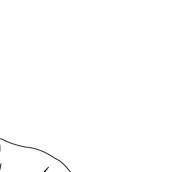
Thesehigh-techdevicesarereflectivescreens thatprojectliveorrecordedworkoutswhile allowingyoutoseeyourselfasyouexercise. Theycanbequiteexpensiveandrequireamonthly membershipforaccesstoclasses.
Afitnessmirrorlookslikeamirrorhangingonyourwall, butwhenyoupoweritup,it’slikeahugetabletwhereyou canstreamhundredsofinstructor-ledclassesthrougha myriadofroutines.Unlikethefitnesseasel,thesemirrors donotrequirefloorspace.
Fitnesseaselscomeindifferentstyles,butthebasisisa mirrormountedonaneaselorarmoire.Theseoftencome equippedwithvariousweightsandresistancebands,with spaceinsidethecabinetareatostoretheequipment.Keep inmindthatthesedevicessitonthefloor,likeapieceof furniture,soyou’llneedsomeroomforthedevice.
Nearly 70% of adult smokers say they want to quit each year.
If you’re one of them, you might want to consider nicotine replacement therapy (NRT).
The goal of NRT is to cut down on cravings for nicotine and ease the symptoms of nicotine withdrawal. These treatments supply low doses of nicotine but do not contain many of the toxins found in smoke.

Before you start using a nicotine replacement product, take note ...
Adding a counseling program will make you more likely to quit.
Do not smoke while using nicotine replacement. It can cause nicotine to build up to toxic levels.

The dose of nicotine should be slowly decreased.
Nicotine replacement helps prevent weight gain while you are using it. You may still gain weight when you stop all nicotine use.
Nicotine supplements come in the form of skin patches, gum, lozenges, inhalers and nasal sprays. All these products work well when used correctly. People are more likely to use the gum and patches correctly than other forms, both of which are covered under UMR’s Wellness CARE program.

The more cigarettes you smoke, the higher the dose you may need to start.
SKIN PATCHES GUM
LOZENGES
INHALERS
NASAL SPRAYS
You can buy nicotine patches without a prescription, or your health care provider may prescribe them. All nicotine patches are placed and used in similar ways:
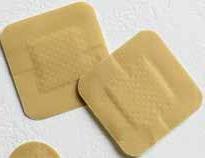
• A single patch is worn each day.
• Place the patch on different areas above the waist and below the neck each day.
• People who wear each patch for 24 hours will have fewer withdrawal symptoms.
The spray gives a quick dose of nicotine to satisfy a craving you can’t ignore. Levels of nicotine peak within 5 to 10 minutes after using the spray. It requires a prescription.
• Follow your provider's instructions about how to use the spray. When you're starting to quit, you may be told to spray 1 to 2 times in each nostril, every hour. You should not spray more than 80 times in 1 day.
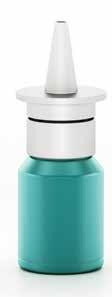
All nicotine products may cause side effects. Symptoms are more likely when you use very high doses. Reducing the dose can prevent these symptoms. Side effects include:
• Headaches
• Nausea and other digestive problems
• Problems getting to sleep in the first few days, most often with the patch

Talk to your doctor before starting any nicotine replacement therapy, particularly if you have heart or blood circulation problems. NRT may not be completely safe in pregnant women. And keep all nicotine products away from children. Call the doctor or poison control right away if a child has been exposed to a nicotine-containing product, even for a short time.
• The spray should not be used for longer than 6 months.
• The spray can irritate the nose, eyes and throat. These side effects often go away in a few days.
You can buy nicotine gum or lozenges without a prescription. Some people prefer lozenges to the patch because they can control the nicotine dose. Tips for using the gum:
• If you’re just starting to quit, chew one to two pieces each hour. Do not chew more than 20 pieces a day.
• Chew the gum slowly until it develops a peppery taste. Then, keep it between the gum and cheek, which lets the nicotine be absorbed.
• The goal is to stop using the gum by 12 weeks. Talk with your doctor before using the gum for a longer period.
Your health care provider can prescribe medications to help you quit tobacco use. These medications do not contain nicotine and are not habit forming. They work in a different way than nicotine replacement therapy products. Smoking cessation medications can help lessen the craving for tobacco, decrease withdrawal symptoms and keep you from starting to use tobacco again.
Bupropion is a pill that may lessen your craving for nicotine. It’s also used for people with depression. It helps with quitting tobacco, even if you do not have problems with depression.
Varenicline helps with the craving for nicotine and withdrawal symptoms. It works in the brain to reduce the physical effects of nicotine. This means that even if you start smoking again after quitting, you will not get as much pleasure from it when you are taking this drug.
These medications may help when other treatments have not worked. The benefits are far less consistent, so they’re considered “second-line treatments”:
• Clonidine is normally used to treat high blood pressure. It may help when it’s started before quitting. This drug comes as a pill or patch.
• Nortriptyline is an antidepressant. It is started 10 to 28 days before quitting.
The nicotine inhaler looks like a plastic cigarette holder and can satisfy oral urges. It requires a prescription.
• Insert nicotine cartridges into the inhaler and “puff” for about 20 minutes. Do this up to 16 times a day.
• The inhaler is quick acting. It takes about the same time as the gum to act. It’s faster than the two to four hours it takes for the patch to work.
• It can help to use the inhaler and patch together when quitting.
According to the Centers for Disease Control and Prevention, tobacco/nicotine dependence is a condition that often requires repeated treatments, but there are numerous helpful treatments and resources for quitting.
Here are a few to consider:
QuitGuide is a free app that helps you understand your smoking patterns and build the skills needed to become and stay smoke free. Use the app to track your cravings by time of day and location, and get motivational messages for each craving you track.
quitSTART is a free app that helps you quit smoking with tailored tips, inspiration and challenges.
Nicotine Anonymous is a 12-step program for people who want to live free of nicotine.
The American Cancer Society’s Great American Smokeout is November 18, challenging smokers to give up cigarettes for 24 hours.
INGREDIENTS:
• 3 tbsp unsalted butter or high-heat oil
• 1 onion, diced
• 2 garlic cloves, minced
• 1 cup pumpkin puree
• 1 cup cream, milk or milk substitute
• 1 tsp salt
• 1/2 tsp black pepper
• 1/2 tsp thyme
• 1/2 tsp rubbed sage
• Goat cheese for garnish (or other cheese of choice)
• 1 lb linguine of choice (quinoa blend, whole-wheat, gluten-free, spiralized veggies), cooked according to instructions
• Optional protein (ground sausage, prosciutto, bacon)
INSTRUCTIONS:
1. In a skillet, melt butter over medium heat. Add onion and stir until translucent. Add garlic and dried or fresh herbs, cook for 1-2 additional minutes until fragrant.
2. Pour all ingredients into a blender and blend until reaching the desired consistency.
3. Pour mixture back into skillet and heat over medium until slightly thickened.
4. Add in cooked and drained linguini. Toss to coat.
5. Top with goat cheese, fresh minced sage, optional protein, and salt and pepper to taste.
INGREDIENTS:
• 1 1/2 cups whole-wheat flour (or gluten-free flour blend)
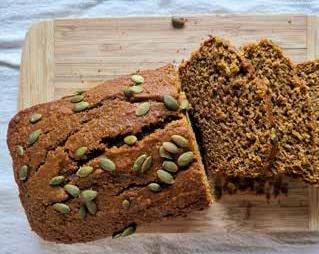
• 1 tsp baking soda
• 1/2 tsp baking powder
• 2 tsp ground cinnamon
• 1/2 tsp ground nutmeg
• 2 eggs
• 1 cup pumpkin puree
• 1/3 cup avocado, canola, sunflower or other oil
• 2/3 cup maple syrup
• 1 tsp vanilla extract
• 1/4 cup crushed pecans, pepitas or other nut
INSTRUCTIONS:
1. Preheat oven to 350 degrees and spray an 8x4-inch loaf pan with cooking spray.
2. Mix flour, baking soda, baking powder, cinnamon and nutmeg together in a bowl. Set aside.
3. In a separate bowl, whisk the eggs, pumpkin puree, oil, maple syrup and vanilla together.
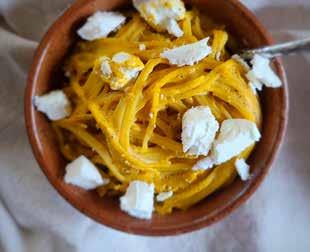
4. Pour the wet ingredients into the dry and mix together until incorporated.
5. Pour the batter into loaf pan and sprinkle with nuts.
6. Bake for 45-50 minutes, or until a toothpick comes out clean.
7. Let cool before slicing and serving.
INGREDIENTS:
• 15-ounce can chickpeas
• ¾ cup pumpkin puree
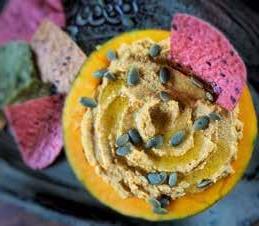
• 1 tsp minced garlic
• ½ tsp salt
• 1/2 tsp cinnamon (optional)
• 2 tbsp fresh lemon juice
• 2 tbsp olive oil (or more for a thinner consistency)
1. Drain chickpeas and add all ingredients to a blender or food processor. Mix until smooth.
2. Refrigerate and enjoy within 5 days.

Visite umr.com y vaya a en Español en la sección a la izquierda del menú principal para acceder a los recursos en español.
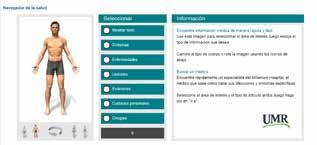

O seleccione Member en el menú principal y vaya a Health Education Library (Biblioteca de Educación en Salud) para obtener más información confiable.
Seleccione Español en el menú desplegable para aprender más sobre las enfermedades comunes, los síntomas y los tratamientos.
Le ayudamos a mantenerse informado sobre el coronavirus (COVID-19)
UMR is a third-party administrator (TPA), hired by your employer to help ensure your claims are paid correctly, so your health care costs can be kept to a minimum and you can focus on your health and well-being.

UMR is not an insurance company. Your employer pays the portion of your health care costs not paid by you.
UMR is a United Healthcare company. ©2021 United HealthCare Services, Inc.